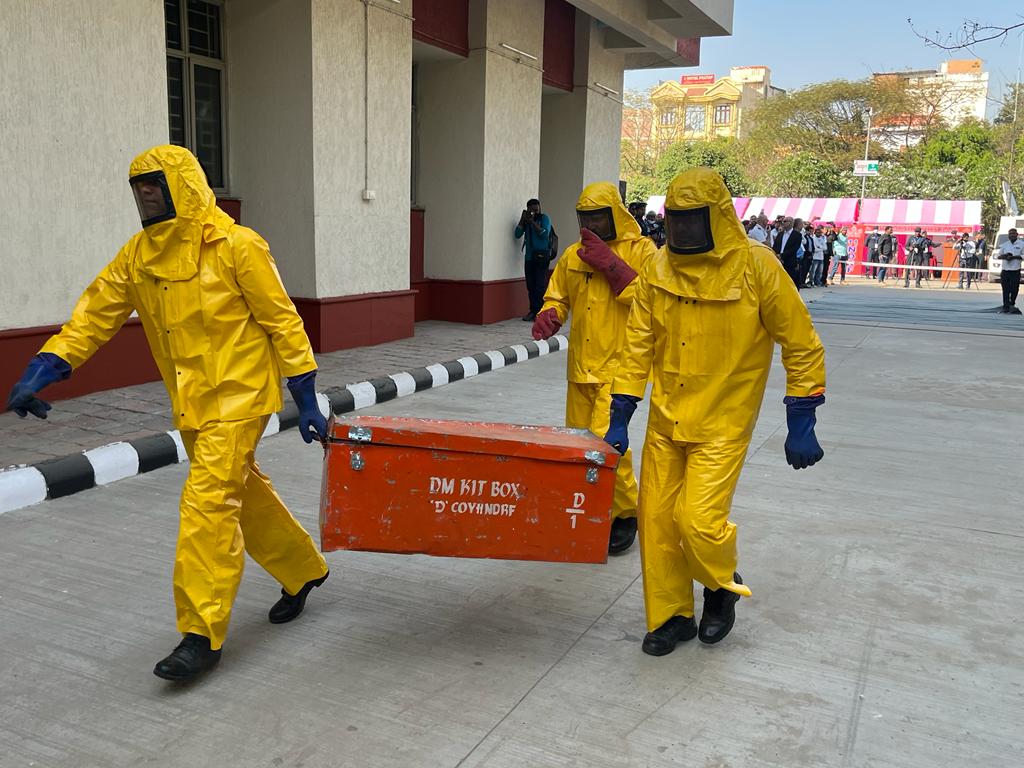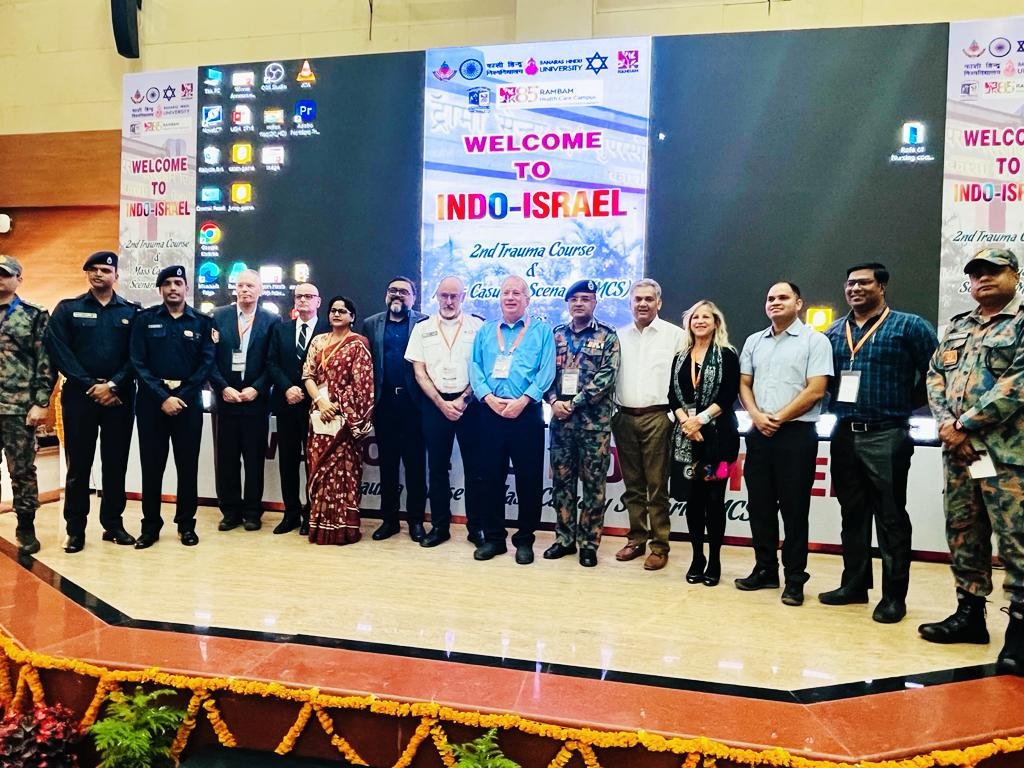
Experts Discuss Lessons Learned and Best Practices for Handling Mass Casualty Scenarios at Indo-Israeli Workshop
Varanasi. On Saturday, BHU Institute of Medical Sciences and Trauma Centre hosted the second day of the second Indo-Israeli trauma course and workshop on Mass Casualty Scenarios. The event was…

Varanasi. On Saturday, BHU Institute of Medical Sciences and Trauma Centre hosted the second day of the second Indo-Israeli trauma course and workshop on Mass Casualty Scenarios. The event was a collaboration between the BHU Institute of Medical Sciences and Trauma Centre and various law enforcement and emergency response agencies including police, PAC, 39 GTC, NDRF, CRPF, and RPF. The focus of the workshop was on managing and responding to mass casualty incidents and trauma.
The workshop consisted of three sessions. The first session was delivered by Guy Caspi, Instructor and Director of Haz-Mat, who spoke about pre-hospital management in mass casualty incidents. He highlighted the importance of the response after preparedness, and provided examples of different types of mass casualty incidents, including natural disasters, terrorist attacks, and cyber-attacks. He also discussed the different definitions of mass casualty incidents and explained that the ratio of resources and casualties determines when a situation can be called a mass casualty incident.
Caspi explained the whole process of responding to mass casualty incidents, which starts from the Regional Dispatch Centre. He emphasized the need to decide which patients should be treated in which level hospitals, depending on the severity of the casualty.
In the second session, Professor Michael (Mickey) Halberthal, Director and CEO of Rambam HCC, talked about triage in mass casualty incidents and hospital approaches. He stressed the importance of triage in situations of manpower shortage, as it helps determine the urgency of a patient's need for treatment and the nature of treatment required.
Prof. Halberthal explained that the categorization of triage is influenced by the size of the incident, the number of injured patients, and available manpower. He also highlighted that the death rate in mass casualty situations can be reduced by 25% if patients are provided triage at a level 1 trauma center. He emphasized the need for hospitals not to be overloaded or underloaded and stressed that being a good triage officer comes naturally with experience.

The third session was conducted by Professor Amit Gupta, professor of the Division of Trauma Surgery and Critical Care JPN Apex Trauma Centre, AIIMS. He talked about lessons learned from 2017 to 2023 and explained that if something is good anywhere, it should be adopted by others too. Prof. Gupta explained the Trauma Care System (TCS) and highlighted the criteria for a Level-1 trauma center, which includes dedicated trauma service and surgeons, community outreach and public interest, trauma quality and performance improvement, trauma quality database research, and teaching and training. He stressed the importance of trauma imaging and research and called for hospitals to collaborate in the learning and training process.
The post-lunch session was conducted by Dr. Lion Poles from Kaplan Medical Centre Rehovot, who talked about mass toxicological incidents. He highlighted the importance of understanding how people react to these incidents by citing examples of past incidents such as the Bhopal Gas tragedy, Sarin Tokyo 1995, Sarin Matsumoto 1994, and the Syrian Military Sarin attack on the civilian population.
The workshop ended with an interactive session in which Guy Caspi explained how to mark the severity of casualties in the triage phase, and discussed the priority of evacuation based on the severity of casualties. He also explained various evacuation methods and showed real incident videos to demonstrate the triage and evacuation process.
The workshop provided valuable insights into how to handle and respond to mass casualty incidents and trauma, with a particular focus on triage and pre-hospital management.


